*
*
*
*
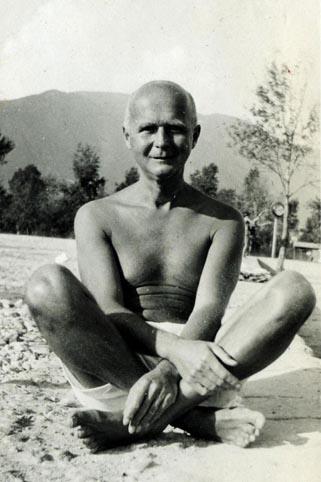
Eduard von der Heydt, summer 1928
at Lido Paradiso near Monte Verità
**
*
*
*
*
« Find joy. »
Buddha, Dhammapada : « On Joy »
« Finde Freude »
*
*
*
*

Eduard von der Heydt, summer 1928
at Lido Paradiso near Monte Verità
**
*
*
*
*
« Find joy. »
Buddha, Dhammapada : « On Joy »
« Finde Freude »
Buddha, Dhammapada : « Über Freude »
*
A few unknown pictures concerning Eduard von der Heydt
may be useful, since there is a new interest in that topic.
You are welcome to use the photos for the sake of research.
Mention the source : <ymago.net> if you want.
This page is online since December 2006
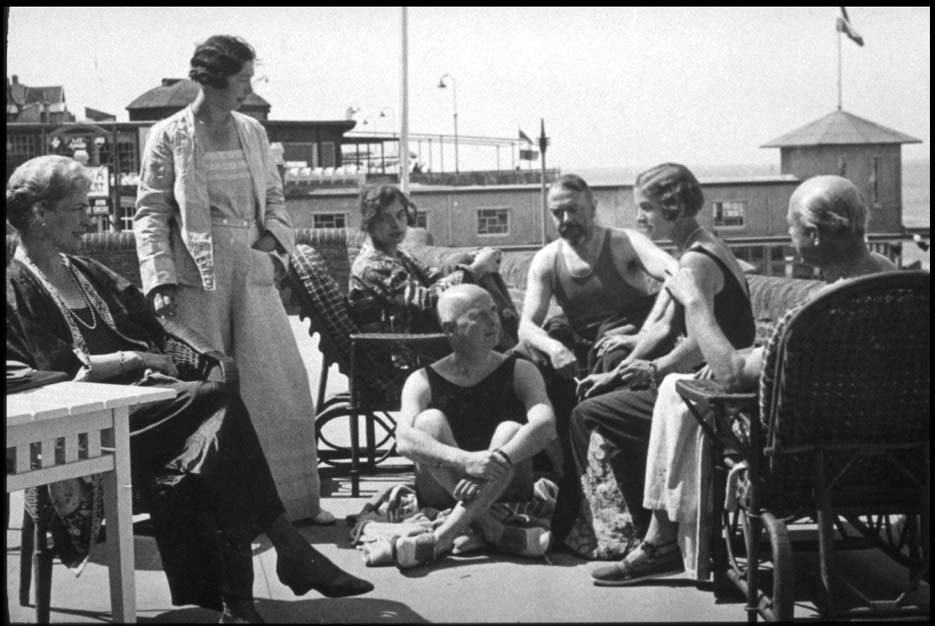
Eduard von der Heydt (1882-1964) with the Ratibor family (Herzog von Ratibor) on the terrace of his house
in Zandvoort, Holland, probably some years after 1926, - the year in which he bought the Monte Verita.
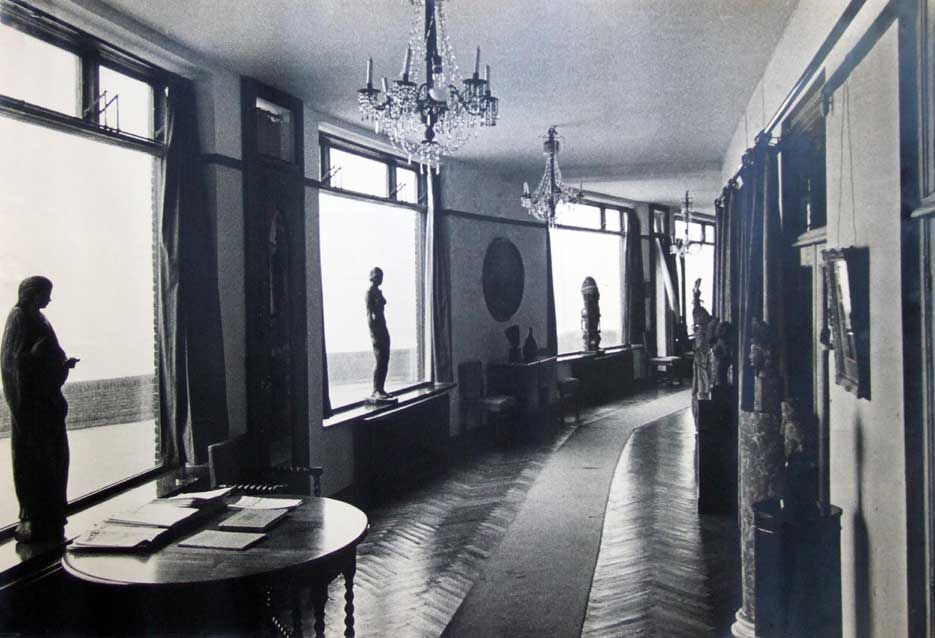
Inside view of the von der Heydt house in Zandvoort. This house was blasted by the nazis during the 1939-45 war (World War II)
[Q : Was Eduard von der Heydt blackmailed by the nazis ? What has happened to all these artworks ?]
The architecture of this house reveals the social nature of its owner : the common space of the corridor is built
on the seaside, meaning that the view and the enjoyment of artworks is for everyone, whereas the intimacy of private rooms
is on the landside (without any significant view). This architecture is quite unique, as it is opposite to most,
if not all that can be observed about that kind of seaside houses.
Ref.: African, Asian (Buddhist) and European Art.
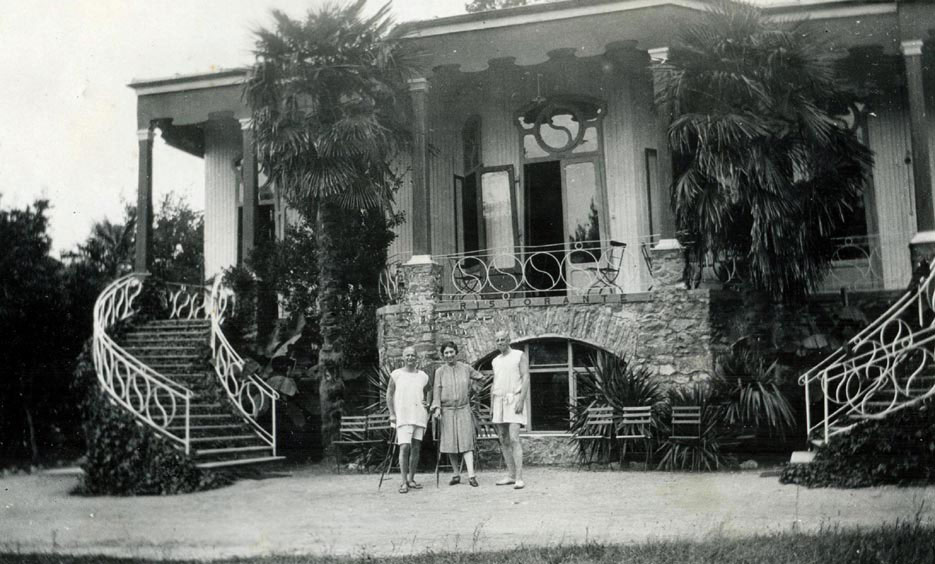
Monte Verità, August 1926: « The Henri Oedenkoven Taoist Temple », still impressive, repainted and yet falling apart.
With Eduard and maybe (?) Vera von der Heydt (born Vera von Schwabach 1899-1996).
In August 1927 Heydt visited Baroness Antonietta de Saint-Léger who owned the Isole di Brissago since1885, and was about to sell them.

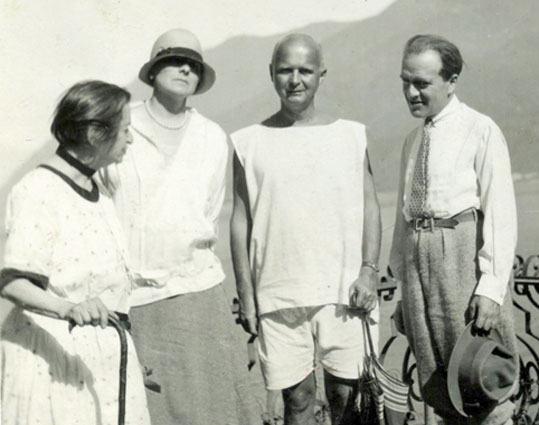
Yet Heydt did not buy the Isole di Brissago : Max Emden, who was his guest at Monte Verità, did.
Picture taken in July 1928, with their common friend Mausi Kluth.
No doubt, Heydt had enough to do with Monte Verità ...
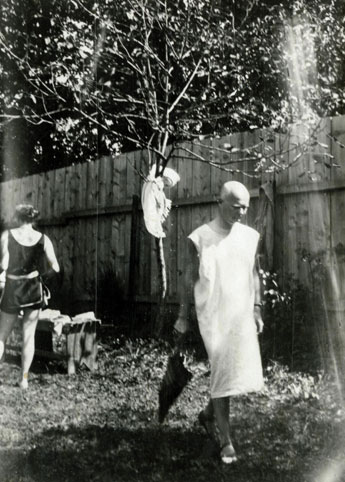
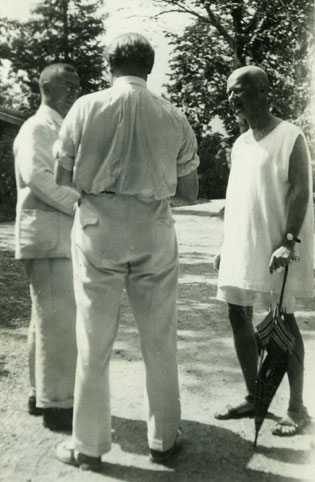
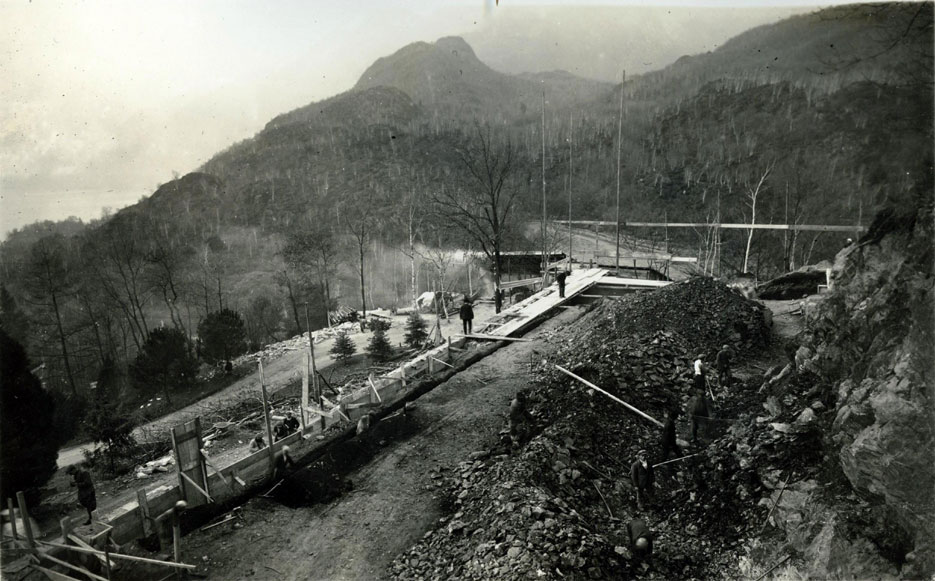
February 1929 : where are the trucks? In the back, one can see the Baladrüm.
March 1929 : avant-garde Bauhaus building techniques - and yet somewhat medieval in regard to our times.
Source : <ymago.n
et>
With Alexander of Russia and Hanna Solf, who later founded
the Solf Circle (resistance against Nazi Dictature)
With Olga Fröbe-Kapteyn (1881-1962) at one of the first Eranos lectures
The bilingual (german and french) Alsatian Poet René Schickele at Monte Verità
Ursula Guggenheim von Wiese
About Old Rumors (quotation in german ~ 1973) :
“Seit eh und je hat der Klatsch in Ascona üppige Bluten getrieben, und es ist unmöglich, Dichtung und Wahrheit zu trennen. Die einen sagen, Heydt sei Nazi gewesen, der zu Gunsten der braunen Herren in Deutschland in einen grossangelegten Goldschmuggel verwickelt worden sei; die andern bestreiten es glühend und weisen darauf hin, dass der Baron vielen Emigranten geholfen und jüdischen Kindern Unterschlupf gewährt habe. Vielleicht stimmt beides, jedenfalls lässt es sich denken, dass man sich in jener Zeit in einer solchen Stellung nur halten konnte, wenn man zumindest starke Konzessionen machte.” Ursula Guggenheim von Wiese unter Mitarbeit von Doris Hasenfratz, Ergänzung zur ersten Neuauflage (1973) von: Robert Landmann, Ascona - Monte Verità. Auf der Suche nach dem Paradies. Benziger, Zürich 1973; Ullstein, Frankfurt/M, Berlin, Wien 1979, S. 241. Zweite Neuauflage (2000) mit Nachwort von Martin Dreyfus: Huber, Frauenfeld 2000, S. 279-280.
(Probably quite reliable, as Ursula von Wiese and her husband Werner Johannes Guggenheim lived in Ascona at that time.)
Prince August William (Prince Auwi), the fourth son of Kaiser Wilhelm II
trying to be accepted by the newly empowered National Socialist party.
Note that Heydt is not dressed the same and that he looks rather
embarrassed by the new vestimental demeanour
of his companion.
Though Heydt lived in a very different context and was not directly involved in WW2, his case bears some resemblance with Oskar Schindler. On one hand, he tried to stay in good terms with the nazis : contacts with Hermann Göring ?, and maybe - just as Schindler did : German Abwehr ?, i.e. Admiral Canaris ? - though it seems that none of these brown elites were ever noticed as von der Heydt guests at Monte Verità, - except for Prince August Wilhelm, i. e. Prince Auwi, the fourth son of Kaiser Wilhelm II, who tried indeed to « pose as a nazi », yet was never really accepted as such for quite obvious reasons. (Also : some elements seem to indicate that Prince Auwi was gay.) On the other hand, letters and further printed testimonies prove that Heydt helped jewish friends to escape nazi persecution and some even say that « he accomodated numerous jewish children at Monte Verità ». Thus, the few facts and lots of allegations about his activity at that time can be interpreted in many contradictory ways. As Ursula Guggenheim von Wiese sums it up : « presumably one could hardly stay in such a position at that time without making large concessions ».

The (ex) Crown Prince William / Kronprinz Wilhelm and Eduard von der Heydt
on the terrace of his house in Zandvoort, Holland in 1929.
Heydt's political position, his hopes and his illusions can only be understood from the perspective
of his close friendship to the (ex) german emperor Kaiser Wilhelm II and the Hohenzollern family.
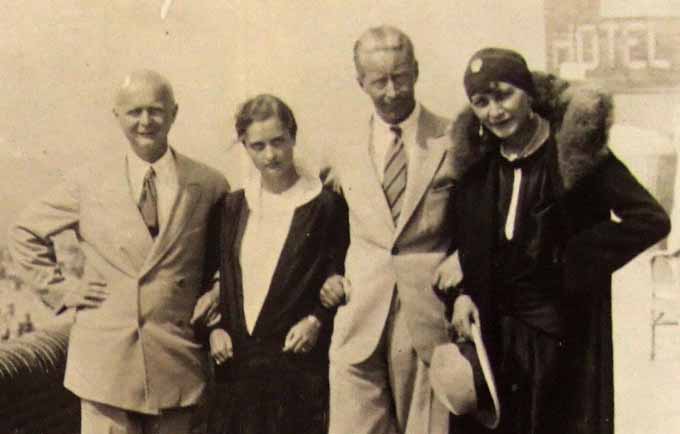 |
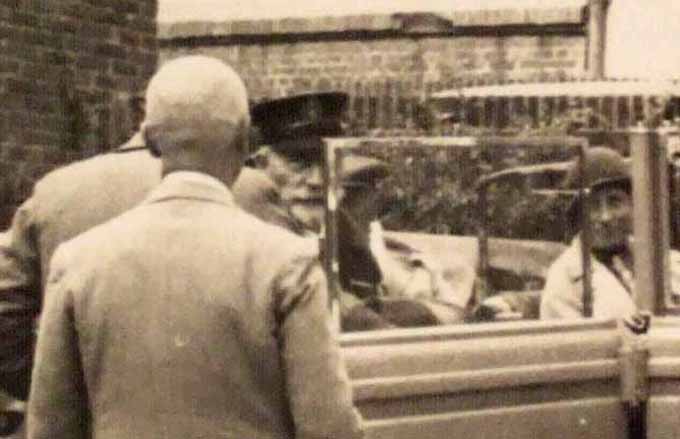 |
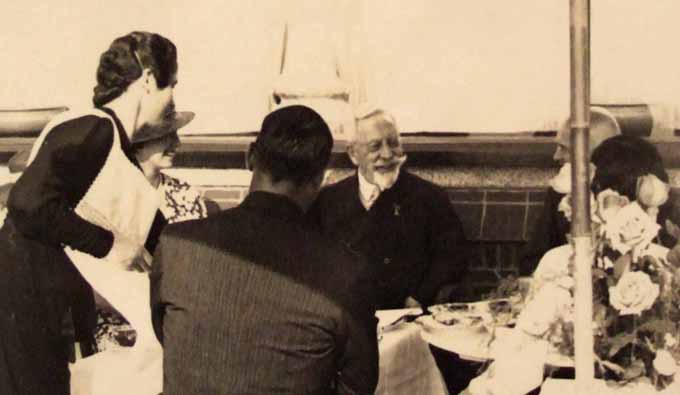 |
 |
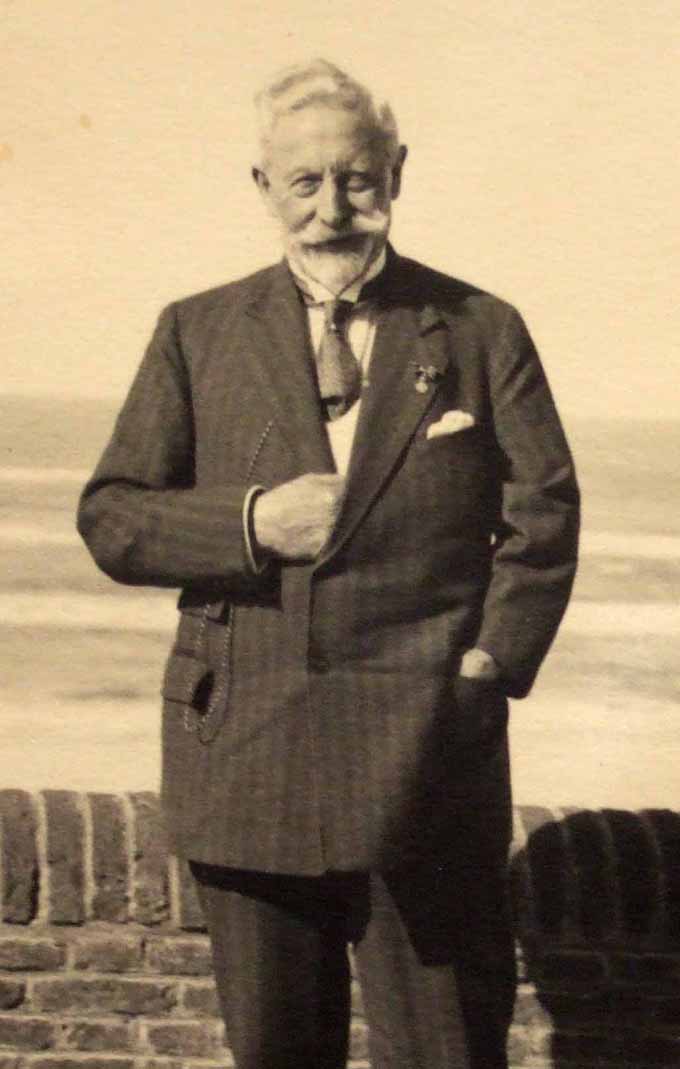 |
Wilhelm II : The Last German Emperor posing
on the terrace of the Von-der-Heydt house in Zandvoort.
Wilhelm II, who was the grandson of Queen Victoria,
asked posterity neither to praise him;
nor to condemn him :
Majestät Brauchen Sonne 1/13
On sequence 3/13, at 5:03, the Von-der-Heydt
house in Zandvoort can be seen.
*
Two very different portraits of Eduard von der Heydt (in german) :
Eduard, der letzte Baron von der Heydt (von Marie-Luise Baum)
http://de.wikipedia.org/wiki/Eduard_von_der_Heydt
(The content of this Wikipedia article was changed numerous times
since its creation on 23. Jan. 2005.)
The Eduard von der Heydt controversy (2005-2007)
As described by Ulrike Schrader (Begegnungsstätte Alte Synagoge Wuppertal)
Andreas Lukesch (Westdeutsche Zeitung) : "There is not enough evidence"
The controversy is settled by a compromise in August 2008
Further Links :
Von der Heydt-Museum Wuppertal
* * *
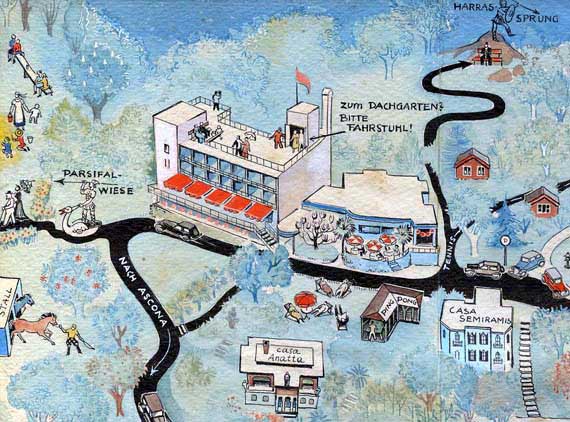 |
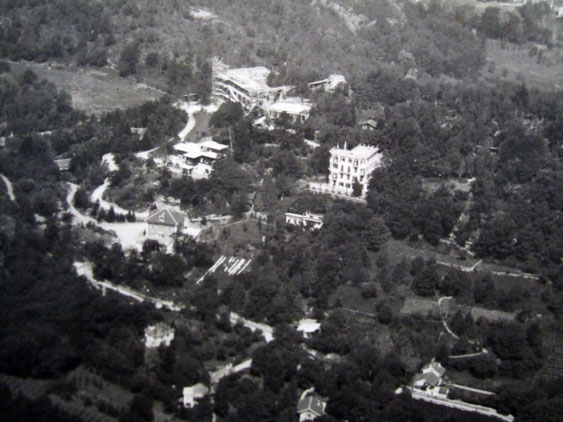 |
The « Eduard von der Heydt Utopia » (i.e. Heydt's most creative era) lasted seven years (1926-1933).
After 1933, things started to become problematic as one may guess. During the 1939-1945 war,
no more guests came, so his avantgardist hotel had to be closed. And after 1945, Heydt's time
was over : « his world » was gone for ever. In 1956, as Heydt became old an sick, he
gave the Monte Verità to the local authorities, under the condition that a cultural and
artistic center should be maintained. Thus, thanks to Eduard von der Heydt, this
unique site has been preserved. Including Casa Anatta, Casa Semiramis and
further remains of « Monte Oedenkoven & Co » (1900-1919)
hopefully offering space for new dreams of a better world.
As for instance :
Defense of Human Rights
at Monte Verità
* * *
EvdH Photogramme by László Moholy-Nagy
Lago Maggiore : Lido Paradiso ![]() Grande Lido Ascona
Grande Lido Ascona
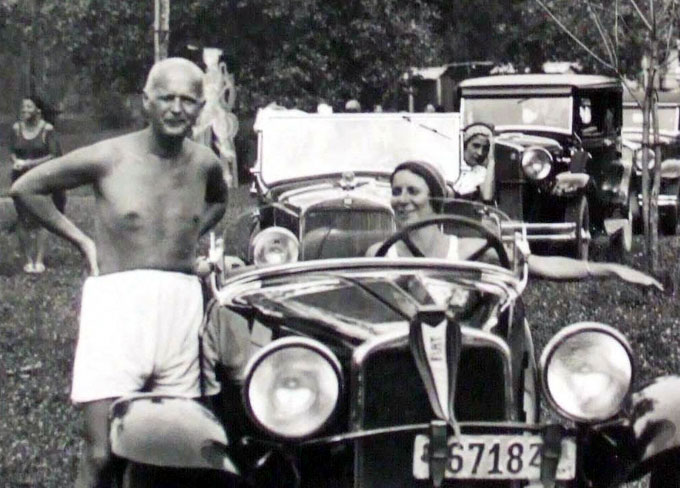
Eduard von der Heydt introducing some distinguished guests
to the 'Lebensreform' lifestyle of the early Monteveritani.
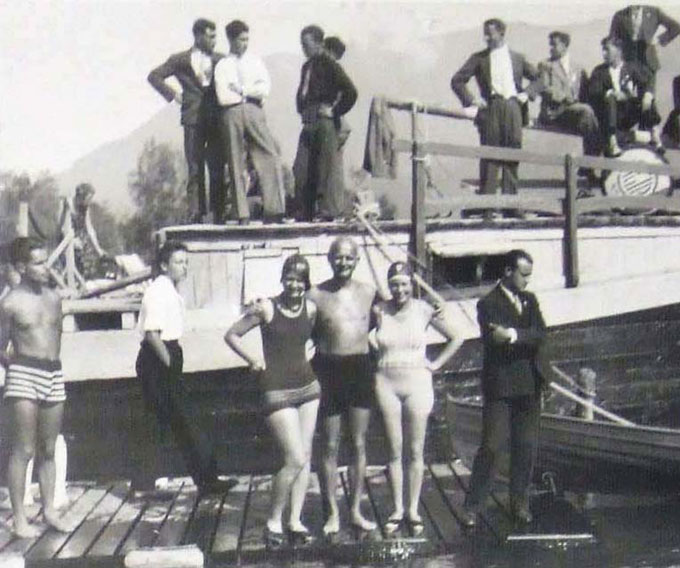
Inspired by the lifestyle of early Balabiott (naked dancers),
the cheerful lady on the right interprets nudism
or naturism in a very fashionable way ...
*
*
“ oben mit, unten ohne ”

Baubô Style (cf. Magritte) :
an orphic consolamentum.
(ref.: bottomless)
*Just a few notes, to be updated :
Cf. Georges Devereux, Baubo - la vulve mythique -, éd. Jean-Cyrille Godefroy, 1983
And also the Walpurgisnacht episode of Goethe's Faust I. A pity that Goethe
was not able to see Baubo with the innocent eyes of antique mytholgy
since in orphic mythology, she is a goddess of laughter
and sacred sexuality, but not a swine :
« So honour to whom honour is due!
In front, Dame Baubo! Lead the crew!
A sturdy sow with mother astride,
All witches follow in a tide. »
*
Musée Marmottan Monet Paris
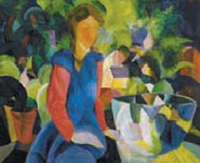
28 octobre 2009 - 20 février 2010
Von der Heydt-Museum Wuppertal
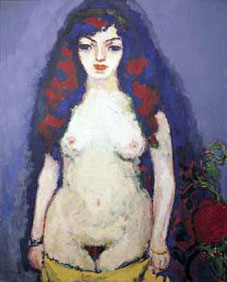
Kees van Dongen : Naked Girl, around 1907
Donated in 1952 by Dr. Eduard Freiherr von der Heydt.
Ref : Mädchenakt - nude girl - donna nudata
*
*
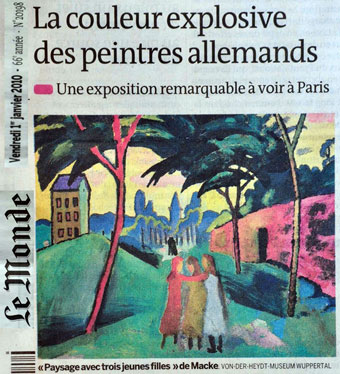
Le Monde: Vendredi 1er Janvier 2010
* * *
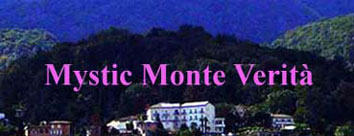
The Baubô-Shaped Monte Verità ...
*
*
*
Monte Verita Today :
Nice site with many old pictures of Monte Verità :
http://www.fileane.com/laurie/laurie01/monte verita.htm
I think the banner photo is from me, but this is ok. Greetings to the webmaster! :-)

Nice site about many MV people, gossip and amusing
anectdotes. Eg. Heydt-Wiese: a good match?
(Don't know if that one is true ...)
colour: Light Goldenrod Yellow